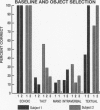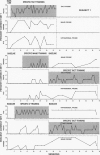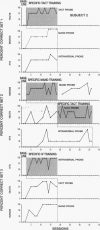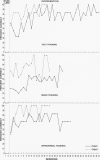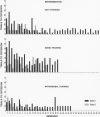Abstract
Two individuals who sustained traumatic brain injuries from motorcycle accidents were taught several verbal responses by using tact, mand, and intraverbal training procedures. The rate of acquisition for each operant and the transfer to untrained verbal operants involving the same response topography were measured. The results showed that tacts and intraverbals were acquired quickest, and training on the tact produced the greatest amount of transfer to the untrained verbal operants. Intraverbal training also resulted in transfer for both subjects, but to varying degrees. Direct mand training proved to be the least efficient way to generate a mand repertoire, and when acquired showed least amount of transfer to the untrained operants. These results seem to be in contrast with the findings of similar research with developmentally disabled individuals, and may have implications for methods of language instruction for the brain injured population.
Full text
PDF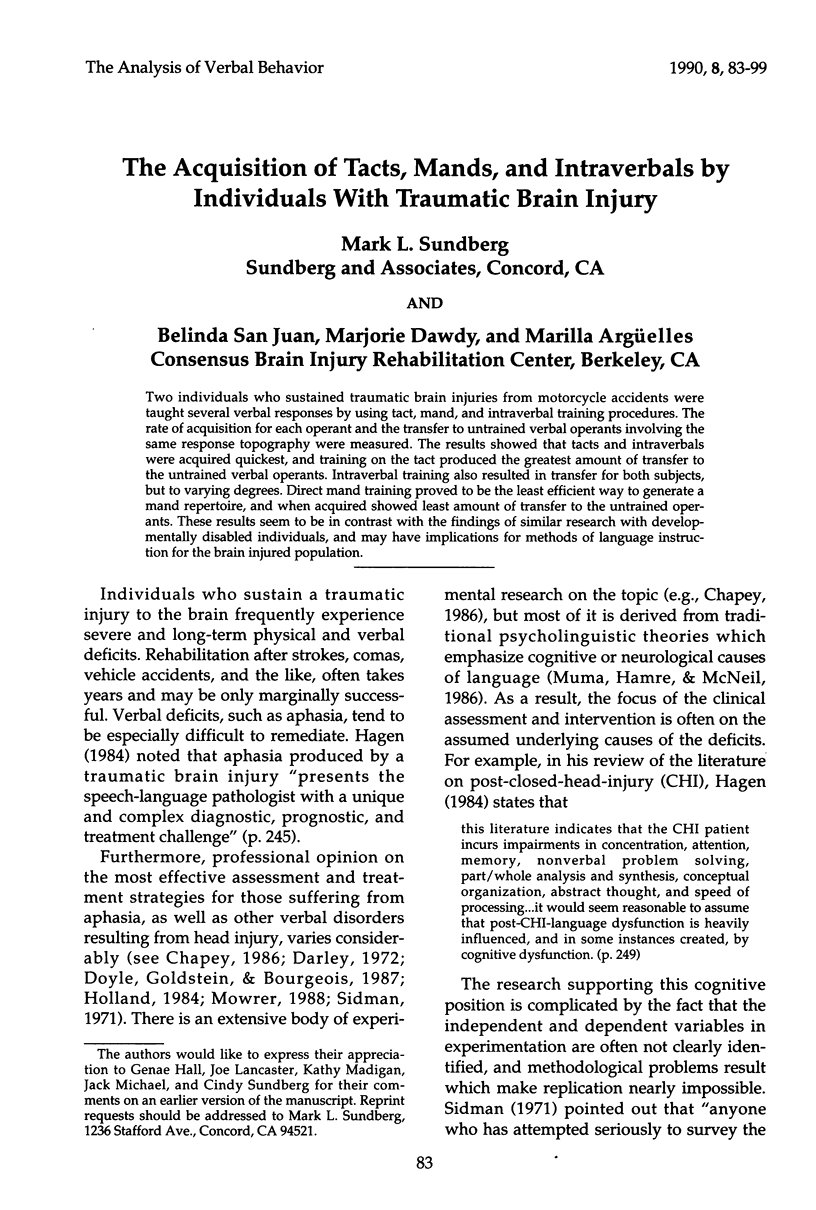
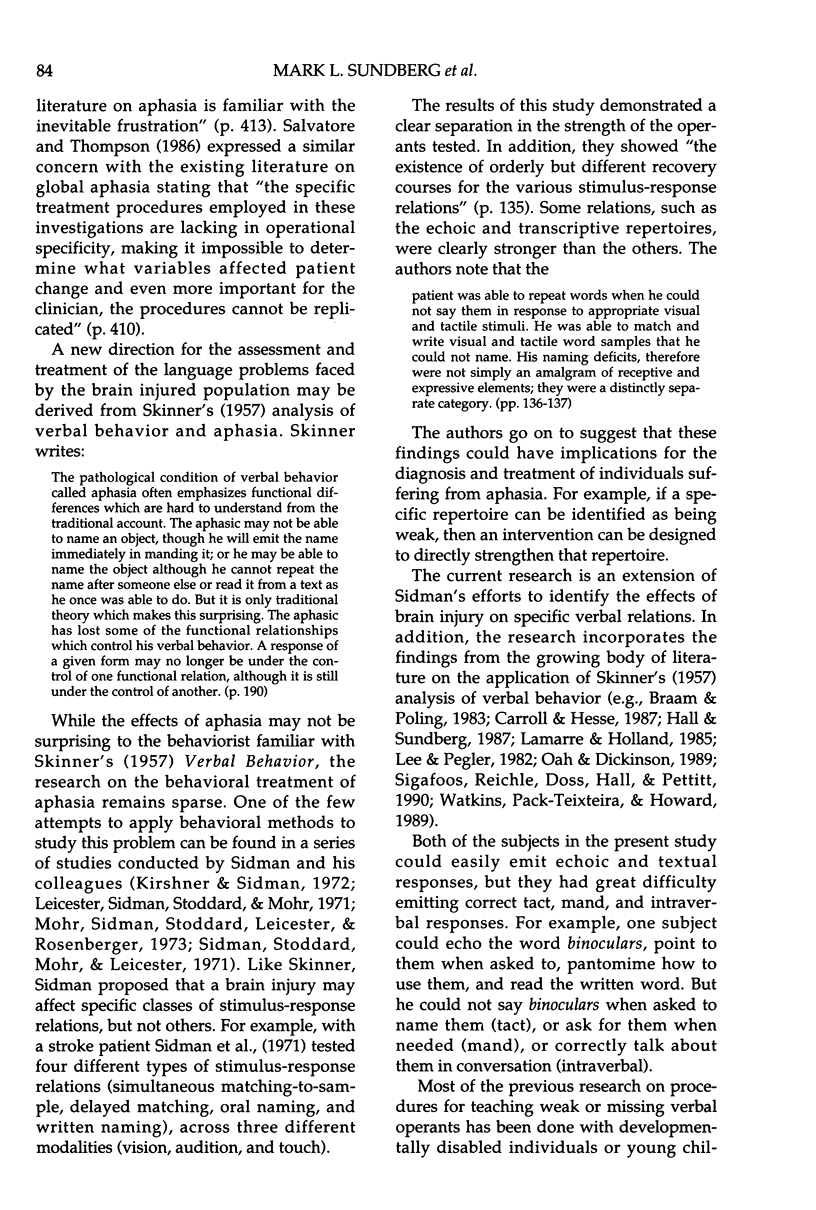
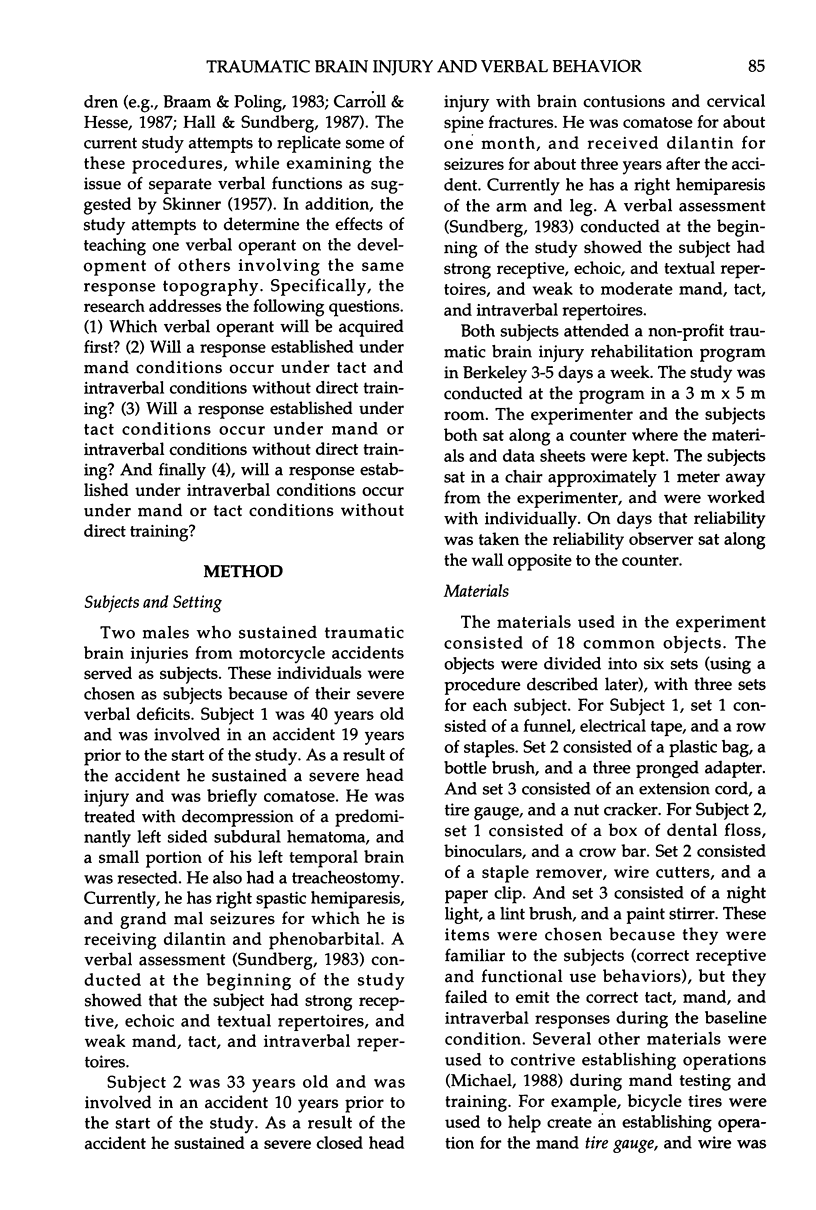
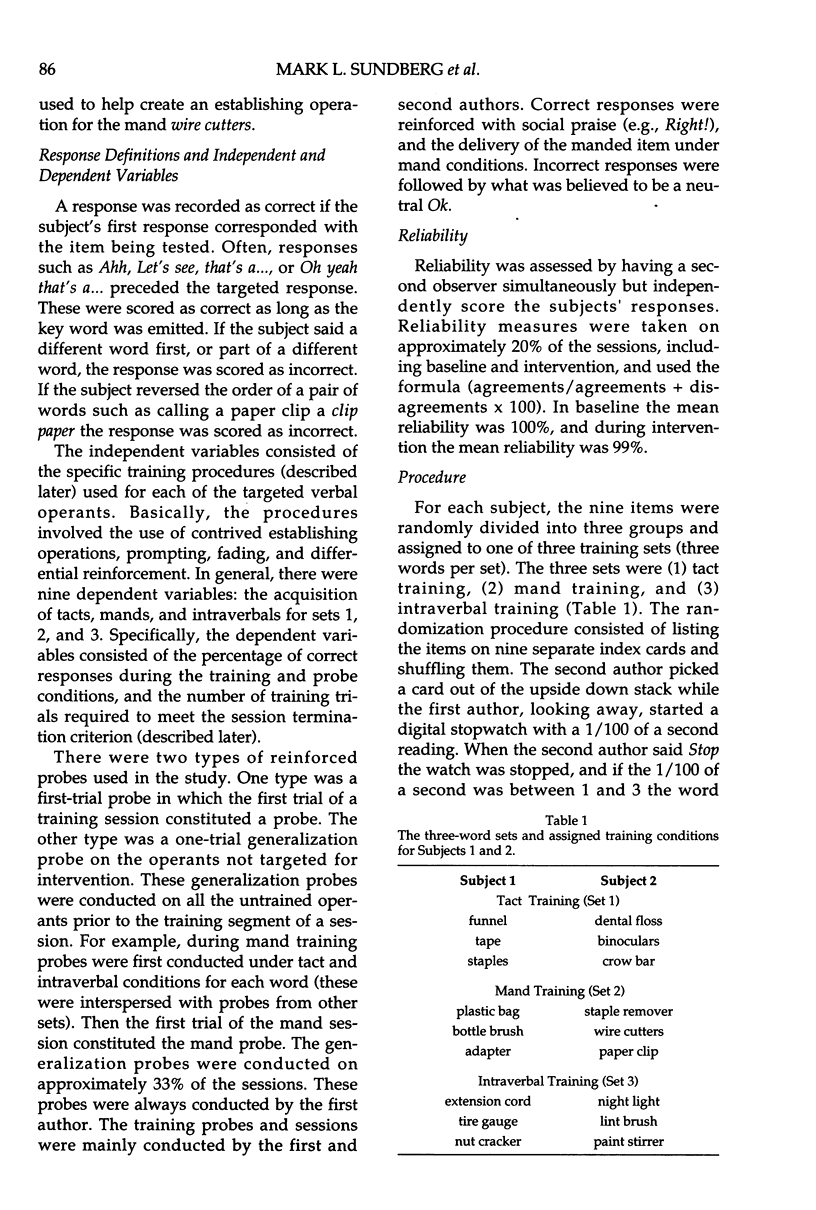
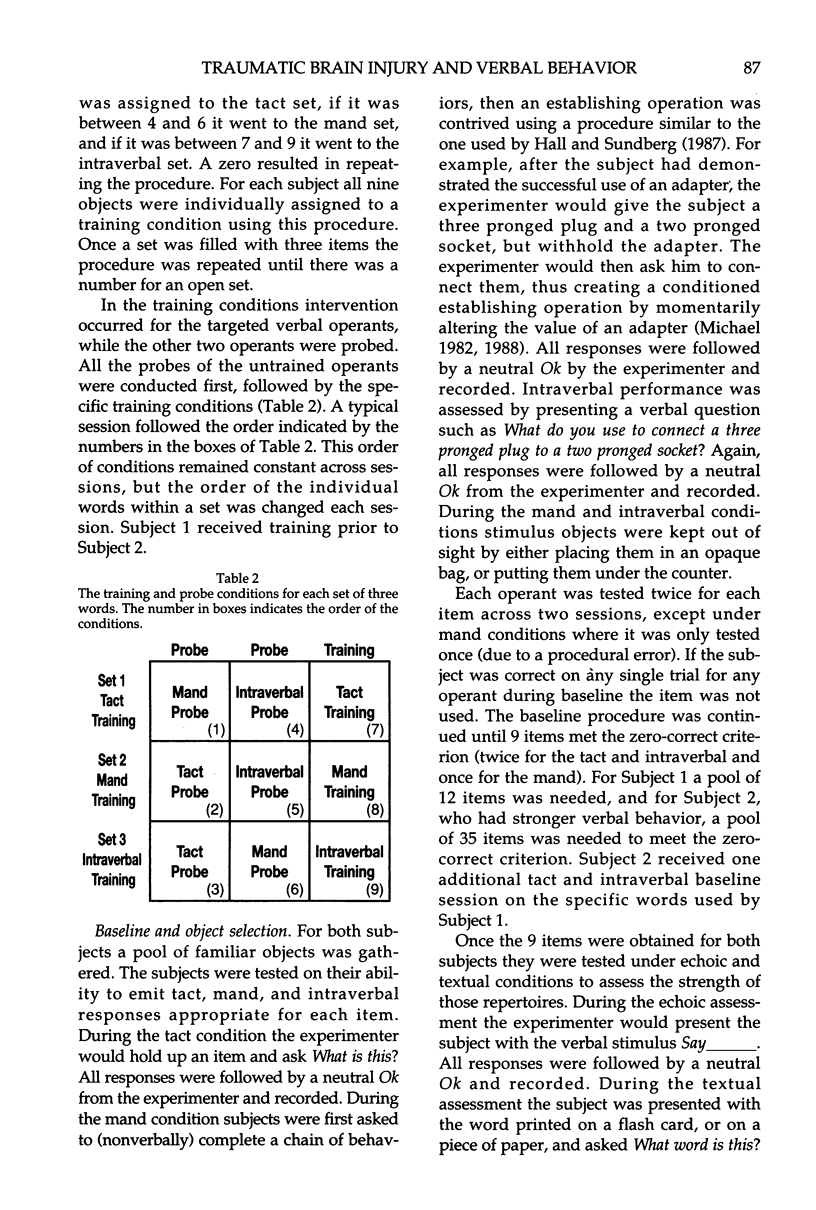
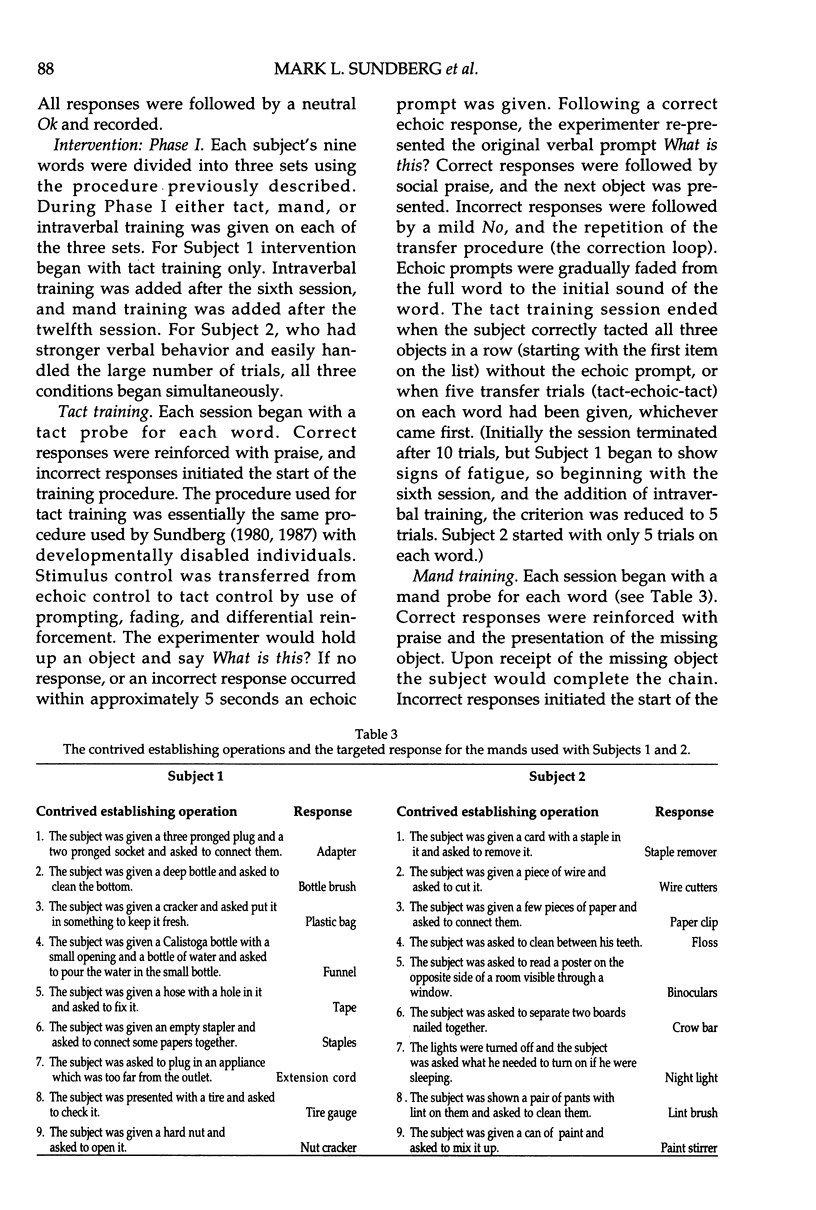
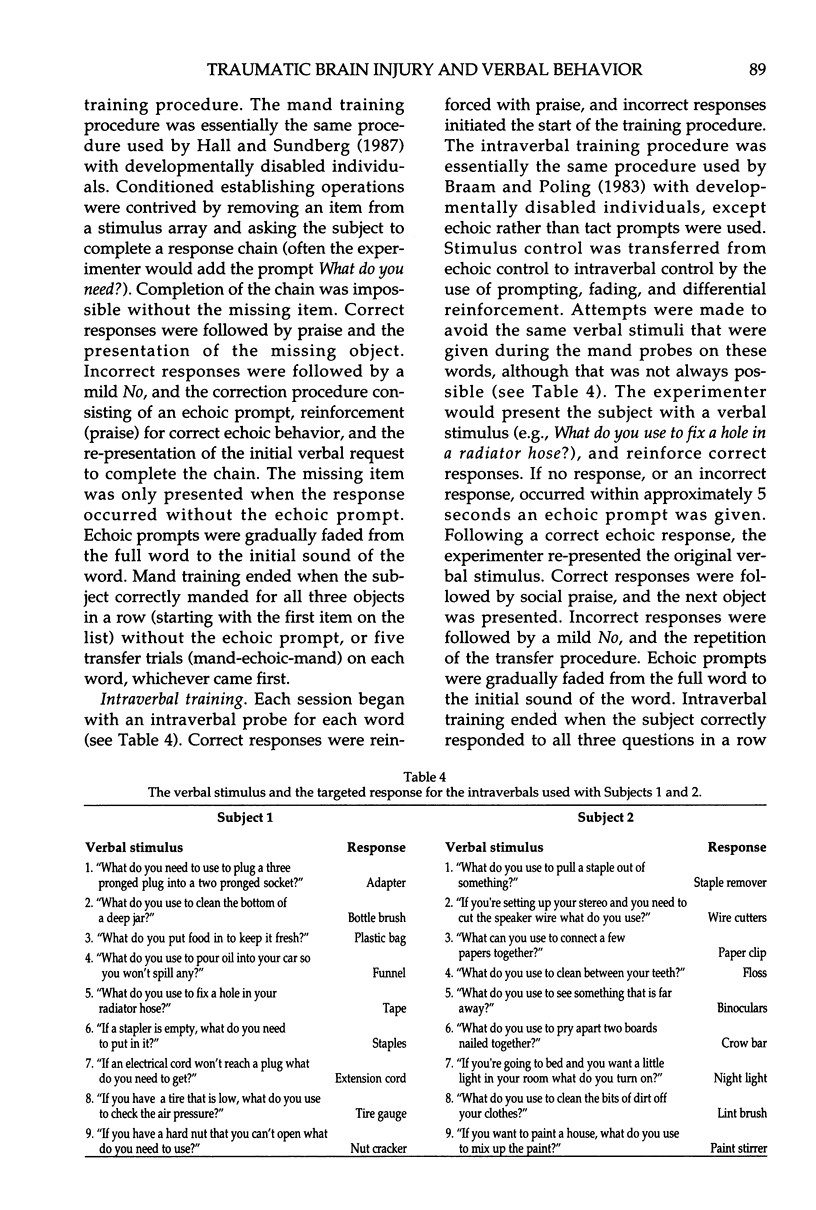
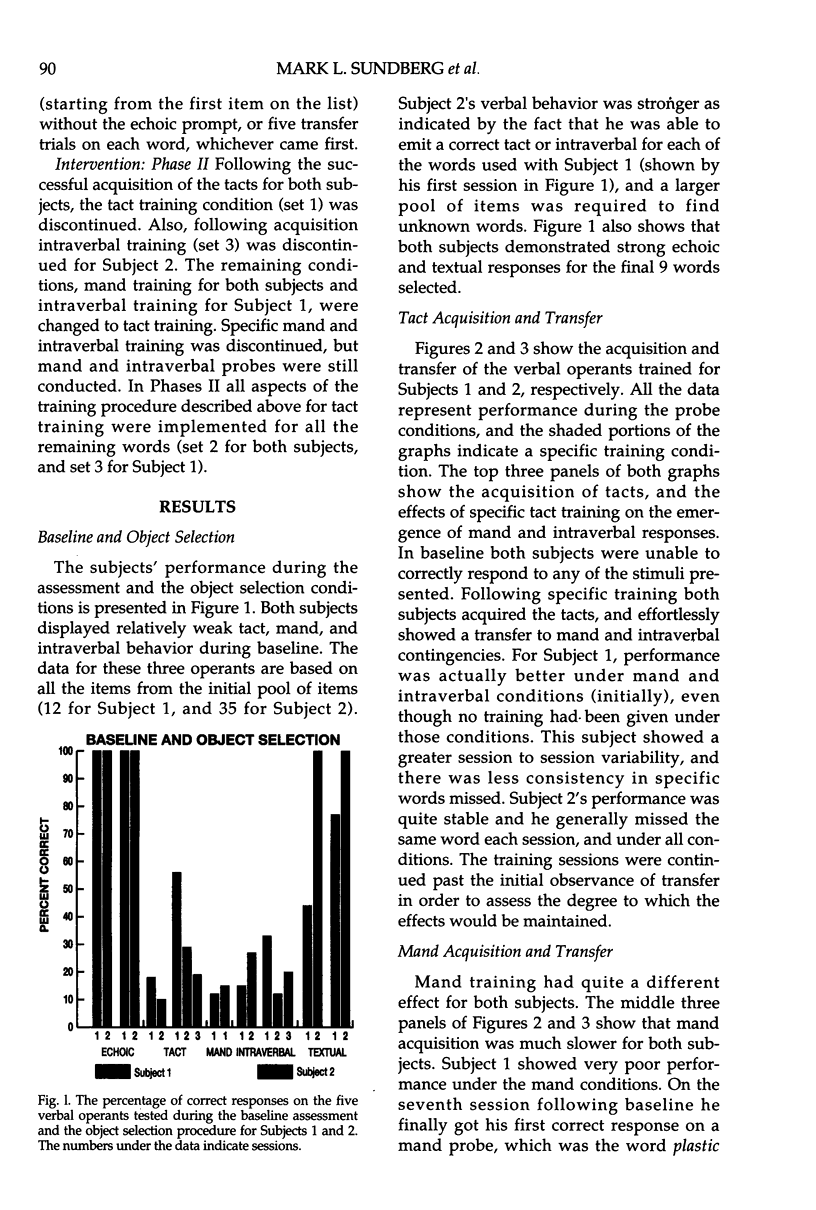
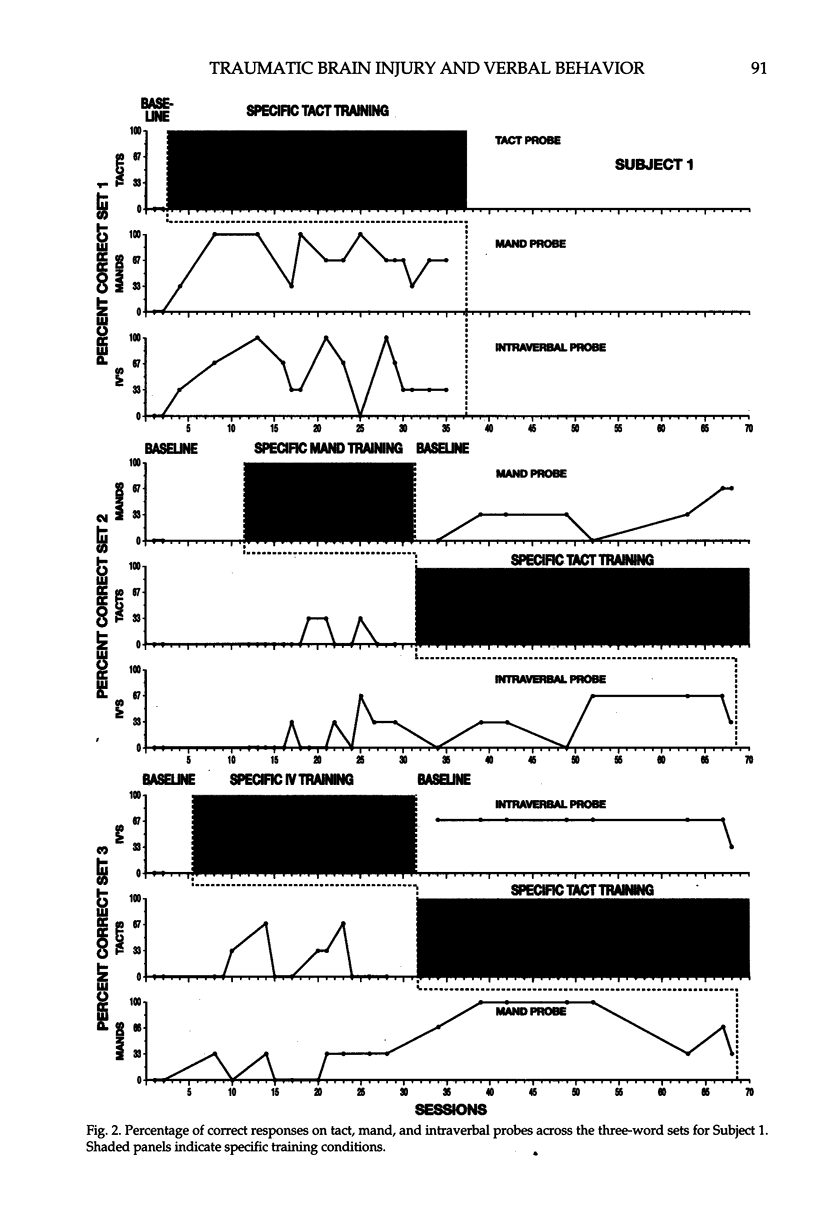
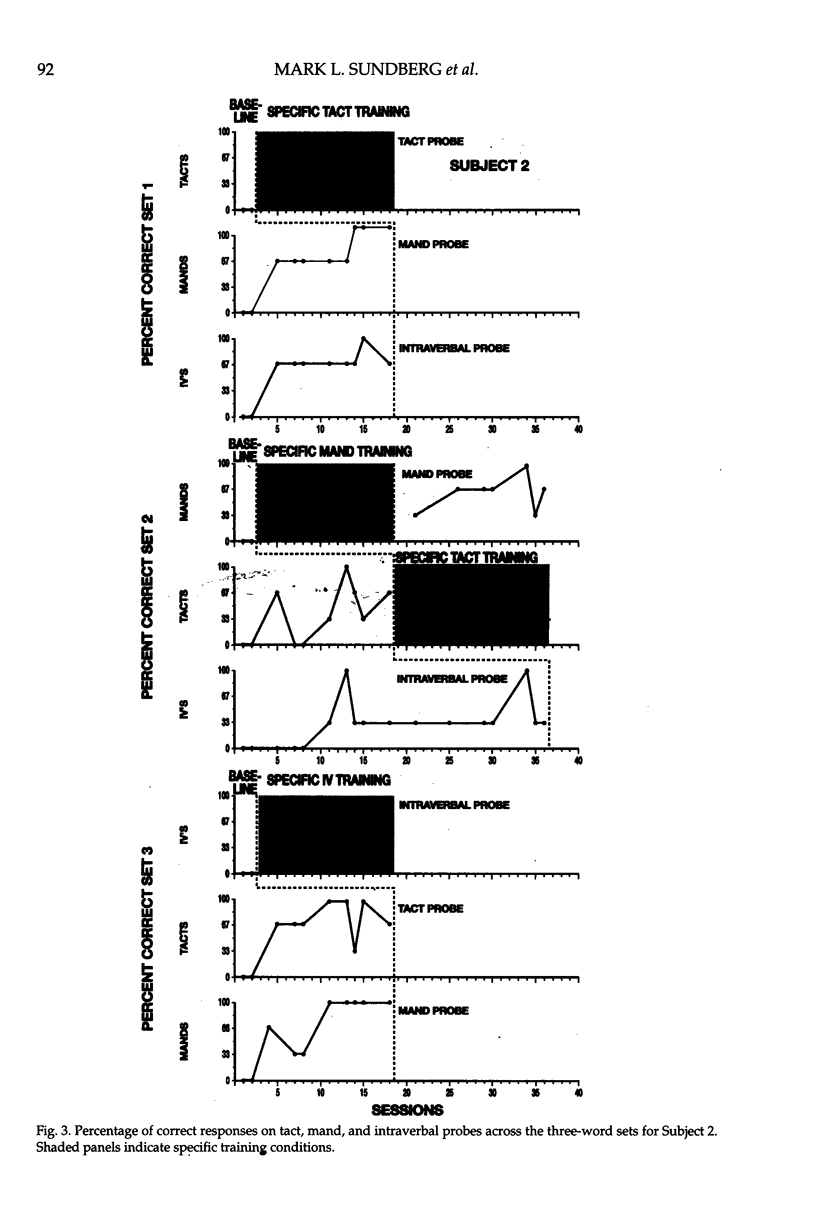
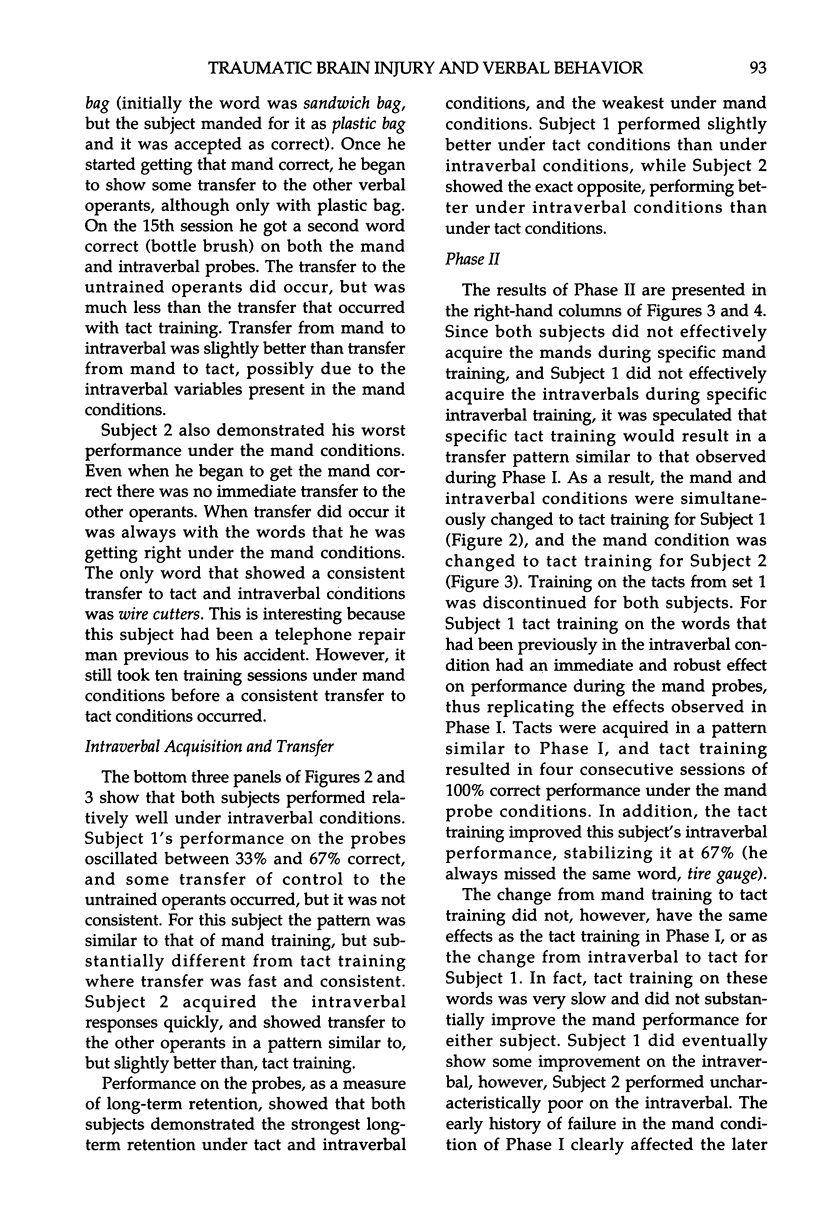
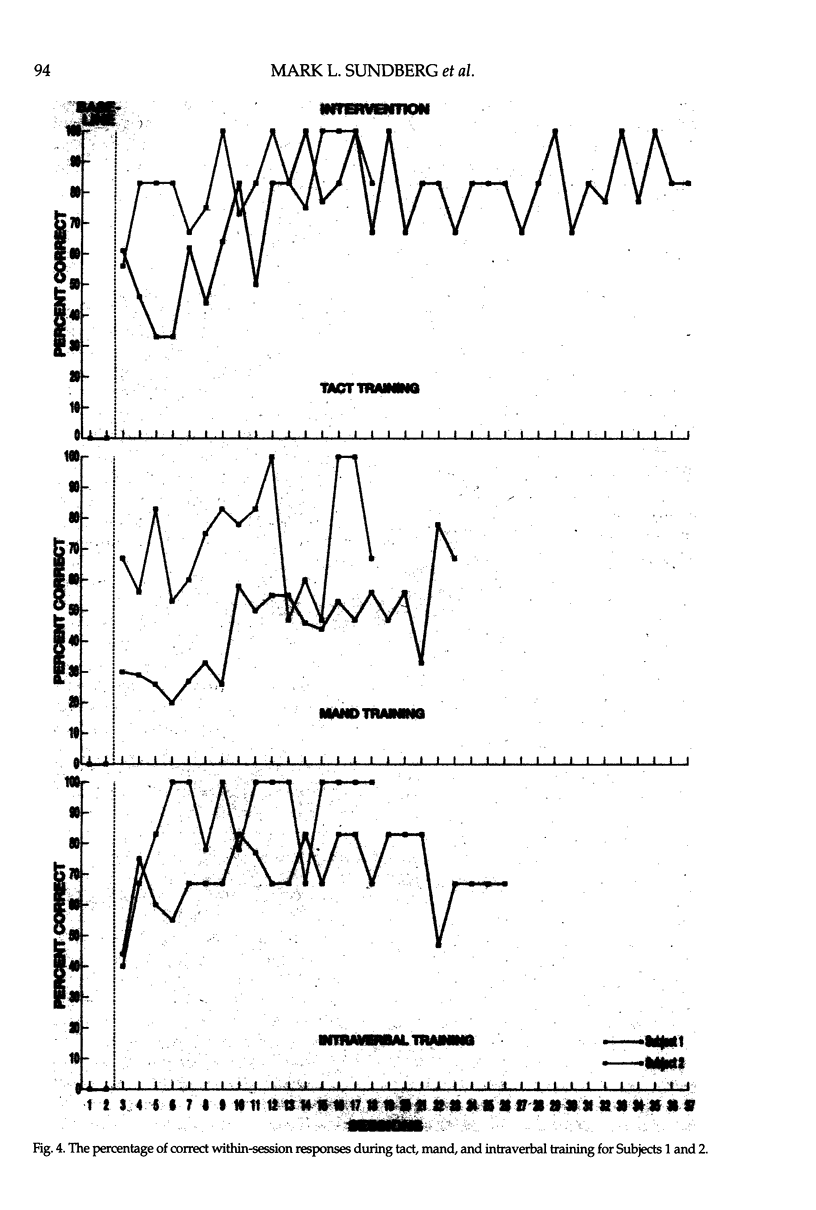
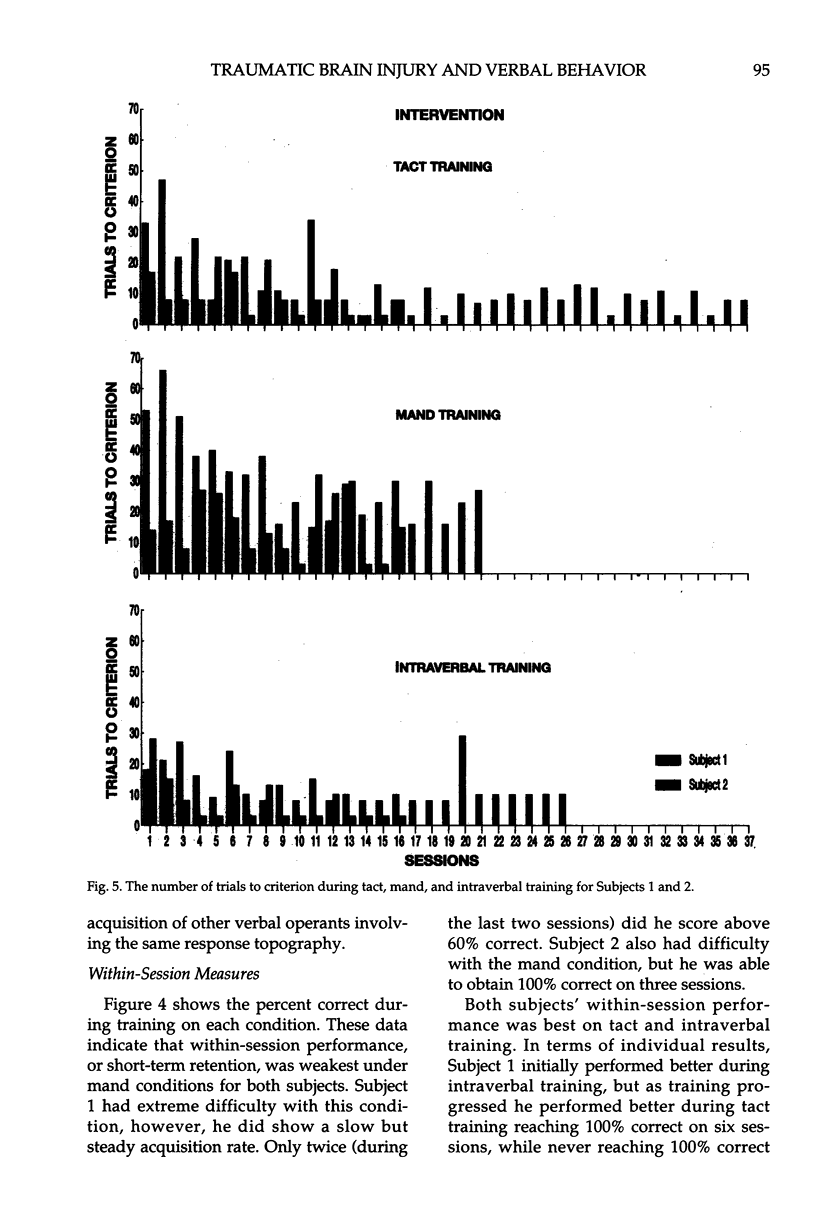
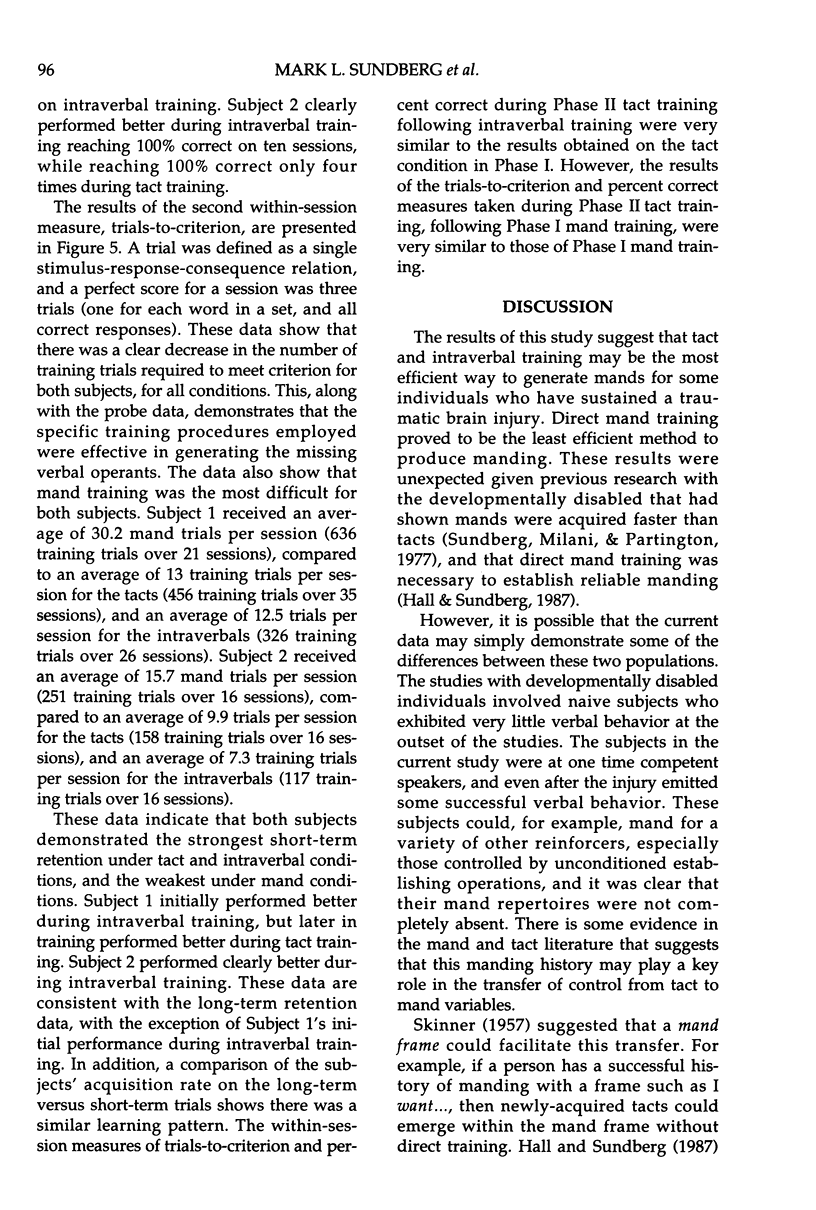
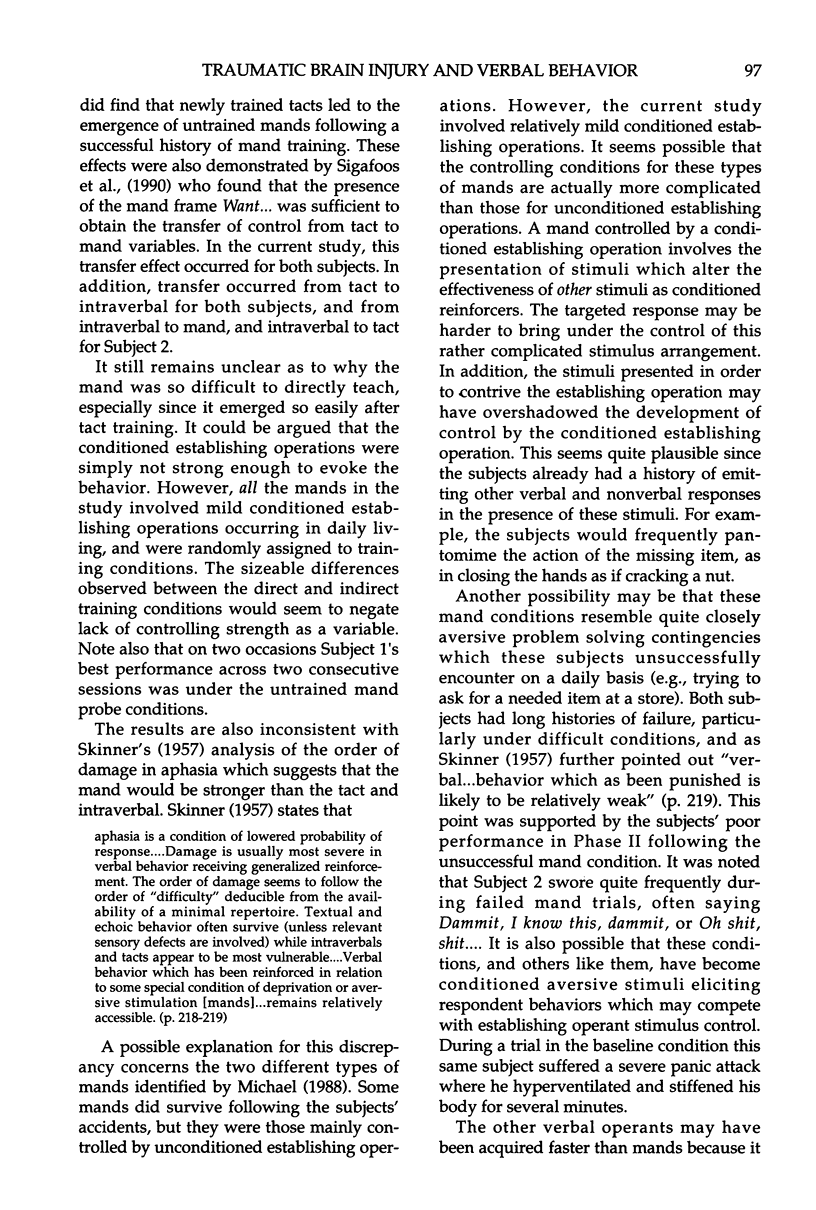
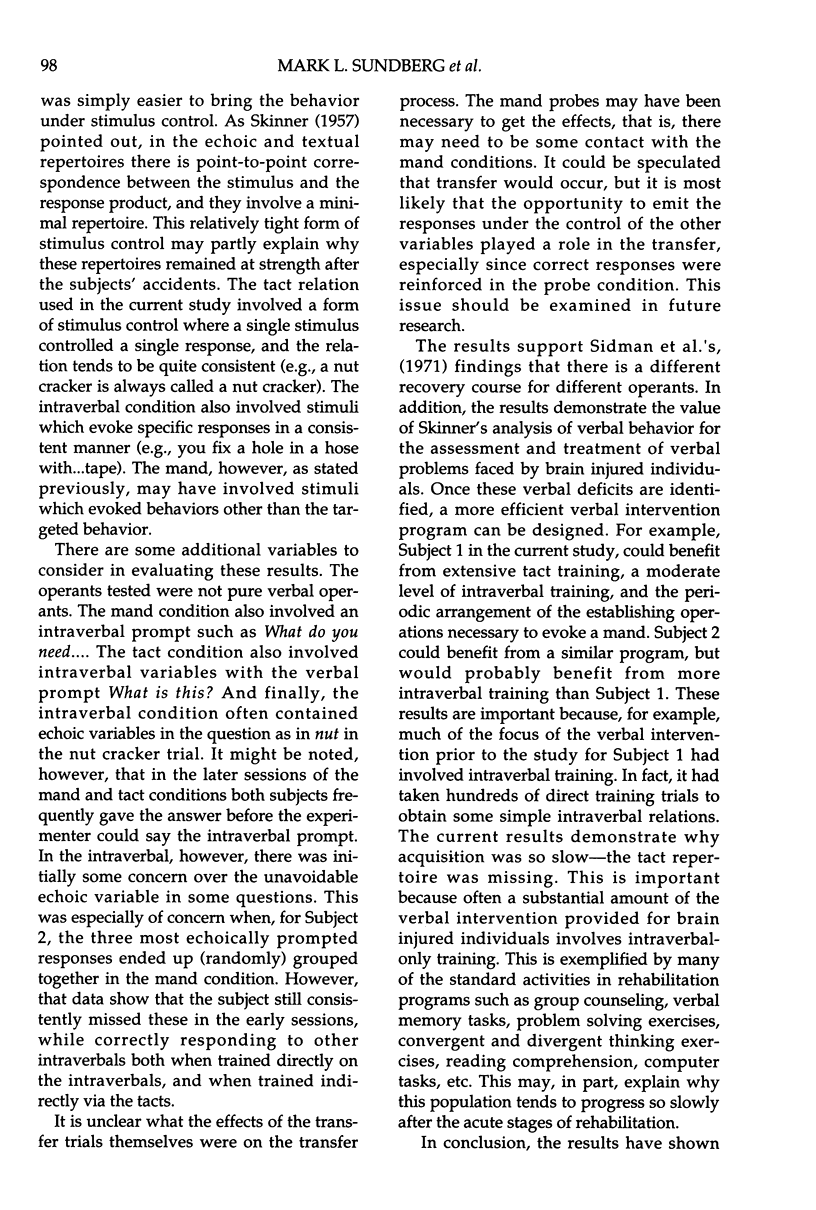
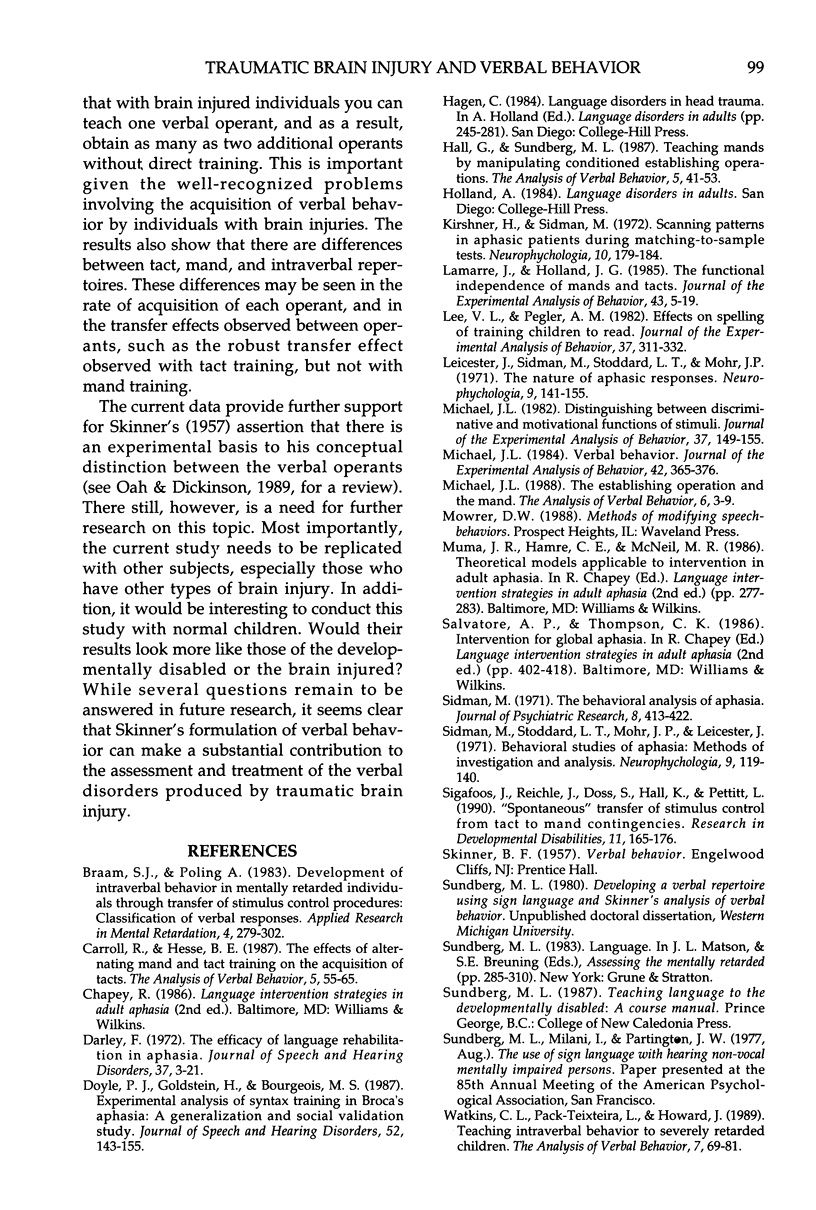
Images in this article
Selected References
These references are in PubMed. This may not be the complete list of references from this article.
- Braam S. J., Poling A. Development of intraverbal behavior in mentally retarded individuals through transfer of stimulus control procedures: classification of verbal responses. Appl Res Ment Retard. 1983;4(4):279–302. doi: 10.1016/0270-3092(83)90030-9. [DOI] [PubMed] [Google Scholar]
- Darley F. L. The efficacy of language rehabilitation in aphasia. J Speech Hear Disord. 1972 Feb;37(1):3–21. doi: 10.1044/jshd.3701.03. [DOI] [PubMed] [Google Scholar]
- Doyle P. J., Goldstein H., Bourgeois M. S. Experimental analysis of syntax training in Broca's aphasia: a generalization and social validation study. J Speech Hear Disord. 1987 May;52(2):143–155. doi: 10.1044/jshd.5202.143. [DOI] [PubMed] [Google Scholar]
- Kirshner H., Sidman M. Scanning patterns in aphasic patients during matching-to-sample tests. Neuropsychologia. 1972 Jul;10(2):179–184. doi: 10.1016/0028-3932(72)90057-7. [DOI] [PubMed] [Google Scholar]
- Lamarre J., Holland J. G. The functional independence of mands and tacts. J Exp Anal Behav. 1985 Jan;43(1):5–19. doi: 10.1901/jeab.1985.43-5. [DOI] [PMC free article] [PubMed] [Google Scholar]
- Lee V. L., Pegler A. M. Effects on spelling of training children to read. J Exp Anal Behav. 1982 Mar;37(2):311–322. doi: 10.1901/jeab.1982.37-311. [DOI] [PMC free article] [PubMed] [Google Scholar]
- Leicester J., Sidman M., Stoddard L. T., Mohr J. P. The nature of aphasic responses. Neuropsychologia. 1971 Jun;9(2):141–155. doi: 10.1016/0028-3932(71)90039-x. [DOI] [PubMed] [Google Scholar]
- Michael J. Distinguishing between discriminative and motivational functions of stimuli. J Exp Anal Behav. 1982 Jan;37(1):149–155. doi: 10.1901/jeab.1982.37-149. [DOI] [PMC free article] [PubMed] [Google Scholar]
- Michael J. Verbal behavior. J Exp Anal Behav. 1984 Nov;42(3):363–376. doi: 10.1901/jeab.1984.42-363. [DOI] [PMC free article] [PubMed] [Google Scholar]
- Sidman M., Stoddard L. T., Mohr J. P., Leicester J. Behavioral studies of aphasia: methods of investigation and analysis. Neuropsychologia. 1971 Jun;9(2):119–140. doi: 10.1016/0028-3932(71)90038-8. [DOI] [PubMed] [Google Scholar]
- Sidman M. The behavioral analysis of aphasia. J Psychiatr Res. 1971 Aug;8(3):413–422. doi: 10.1016/0022-3956(71)90034-3. [DOI] [PubMed] [Google Scholar]
- Sigafoos J., Reichle J., Doss S., Hall K., Pettitt L. "Spontaneous" transfer of stimulus control from tact to mand contingencies. Res Dev Disabil. 1990;11(2):165–176. doi: 10.1016/0891-4222(90)90033-5. [DOI] [PubMed] [Google Scholar]



